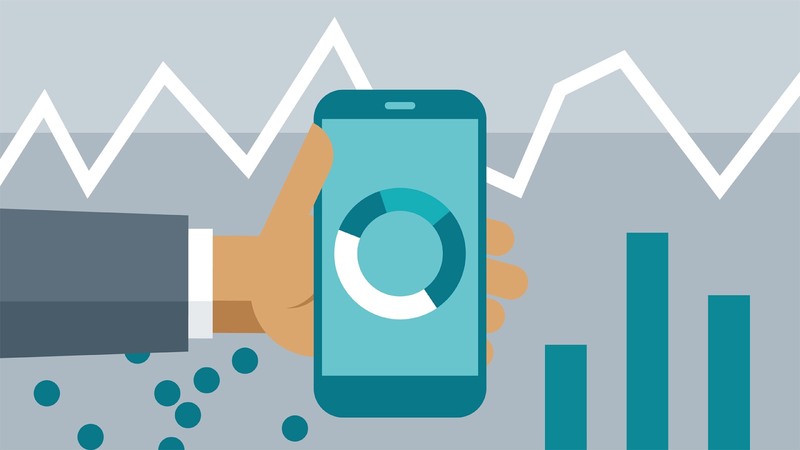If you are a mobile application developer, then you are most definitely concerned with tracking the finished solution’s dynamics of promotion. How popular is your particular product among users? Which criteria do your settled target audience meet – demographics (age, gender etc.), geographical location, etc.? How do users behave inside the solution?
All that data that is useful on numerous occasions can be extracted with the help of special analytics apps. Take a look at our app analytics tools comparison later in the article to help you find the most suitable means for your case.
Top 7 Analytics Apps: The Selection of Applikey Solutions Developers
Below is our mobile app analytics comparison that will help you collect the essential data concerning your software, as well as track the activity of involved users.

Google Mobile App Analytics
We are starting off our list with Google Analytics – perhaps the most popular websites’ analytical data collecting service, which is, by the way, absolutely free. It is available for both iOS and Android users. The information gathered via the special JS code is structured first, and only then is it passed on to the end user. Notice that this app automatically interacts with Google Play, due to which you are able to monitor conversion rates within this marketplace without any additional configurations or integrations involved.
Another thing this service can certainly boast is high accessibility (all the navigation is utterly intuitive) and detailed reports. In particular, you can get the analytical data related to:
- ad campaign and social activity reports.
- geolocation of users.
- conversion rates data.
- visualization of the ways to reach the goal.
- website events monitoring.
- alpha and beta testing.
- level of income accumulated by an app.
- website load speed, etc.
In general, previously considered as the most non-advanced solution compared to all other products in the niche, today, Google Analytics can be called quite a universal means of building any types of reports (thankfully, the service can collect and calculate practically every type of analytical data).
Firebase Analytics
Part of the Firebase mobile development platform purchased in 2014 by Google, Firebase Analytics is a centralized mobile app tracking solution introduced as an alternative to Google Analytics 360. It goes by an event-based data collection methodology, which makes it quite different from Google Analytics 360. All in all, these two ‘family-related’, yet different, solutions are often compared as to which is better to choose. Firebase Analytics’ primary features are:
- advanced mobile analytics UI.
- extensive database.
- unlimited number of hits.
- flexible data retrieval with BigQuery.
- many additional features when coupled with Google Tag Manager (Firebase GTM containers with Look Up Tables and others).
This solution is pretty versatile and becoming increasingly popular among users as a modern alternative to ‘standard’ Google analytics means, which are getting outdated by the day.
Flurry Analytics
Flurry is the secondmost popular tool, which, being completely free, is fully compatible with all common mobile platforms. The main pro of Flurry Analytics is the ability to view even the fairly specific analytical readings right out of the box – particularly, the following types of data:
- number of newly acquired and active users.
- number of sessions and their lengths.
- frequency of users employing an app.
- downtime and error statistics.
- app audience (demographics, language, geographical situation).
- device and product version data.
- events inside an app, etc.
As opposed to the above-presented GA, Flurry does not display an app’s financial readings. Moreover, the service can seem excessively complicated for beginners. If you have not had a chance to use something similar, then you should either study the manual or consider some alternative options (fortunately, we provide 5 other mobile app analytics tools for you to choose from right here in our list).
Mixpanel
Mixpanel is another analytics system in our mobile analytics comparison, which is focused on analyzing user behavior (and not so much on calculating the number of page views). This is a paid tool.
Currently, Mixpanel is considered to be the most substantial, multi-featured tool for internal mobile application analytics among all other similar solutions (for example, you can track how users behave in real time).

Major features of this application include:
- user notifications (similar to push-notifications also available in Mixpanel, but with the possibility of being more targeted).
- target audience segmentation.
- targeting.
- alpha and beta testing for notifications.
- formation of user requests.
- analysis of conversion changes between different events inside a single funnel.
- navigation tracking, etc.
As for the cons, the freemium version of the product offer quite a limited set of features. Nevertheless, it is enough for developers who do not have a lot of apps to handle (up to 5). The full version price is very high and, in the case of 100,000 MAU, can reach up to two thousand dollars per month.
Amplitude
Amplitude is an app analytics platform (not a tracker!) that concerns user behavior as well. In particular, it helps you find out which actions are most frequently made by users right after an app has been downloaded, or even before. Amplitude also allows measuring the frequency of user interactions according to demographics, geolocation, etc.
Major capabilities of this service include:
- monitoring of events inside an app.
- formation of funnels.
- user retention display.
- view and analysis of user behavior in real time.
- level of profit estimation.
- target audience segmentation.
- data export.
- email newsletter.
- ability to integrate with other systems: Optimizely, Slack, where Amplitude can send metrics.
- grouping of the users who refused to use an app.
- alpha and beta testing.
The cons of this product involve its paid nature for users planning to work with more than one app and track over 10 million events per month.
Localytics
Localytics is the next entry in our best mobile analytics tools list, which is not free, but features a load of high-end analytical tools and can be used as a tracker too. This piece of software is supported by all the common (and not very common) mobile platforms and considered to be a practically full-on analog of Mixpanel in many aspects. Localytics is very easy to use and allows comparing your solutions by important criteria.
The Localytics functionality includes the following:
- capturing of financial readings.
- events and segmentation by events parameters.
- funnels.
- user monitoring in real time (in fact, practically real time, with a delay of a few minutes).
- cohort analysis.
- tracking of partner network setups (including Facebook, Google, Twitter, etc.).
- calculation of classic retention.
- alpha and beta testing.
- ability to send push notifications.
- traffic source definition, etc.
On the other hand, despite the fact that the freemium version supports an unlimited number of user apps, it is quite ‘humble’ when it comes to the analytics features provided. In turn, the full price of the paid version is relatively high (it can be 350 dollars a month for the version for 30,000 users; the price grows with the number of users involved), which can be a significant drawback for many users.
Adjust
Adjust is the last multipurpose platform in our list of top app analytics tools. It can provide all the setups data (so you will be able to find out exactly who came to your solution and from where), analytics data gathering, and collection of the marketplace data for efficient promotion. As opposed to Amplitude, the system more resembles a tracker with its capabilities.
For instance, Adjust allows finding out how efficiently an app is being monetized, as well as how much money it makes and in what manner. It is arguably a perfect solution for marketing analytics (as small events, like button pushes, are impossible to track here).
The advantages of this service include:
- semantic analysis of app feedback and reviews with the subdivision by country.
- deep linking for new users.
- tracking of an app’s presets.
- dynamic cohort analysis.
- generation of URL-trackers for monitoring the audience source.
- ability to make your choice of KPI, etc.
Nevertheless, being an extremely fully featured tool, using Adjust is still expensive (the cost starts at $129 per month).
In Conclusion
Summarizing our short review of app analytics tools – how do you make a final choice?
If you are planning to employ free-of-charge analytics only, choose Flurry or Google Analytics – the difference between them is not substantial for most developers. They will answer your essential questions and prepare you to downtime in the data flow or report hardships. If you need to manage a large number of products – pay attention to Mixpanel, Adjust, and Localytics. In all other cases, you should go for Amplitude.
Planning to build an app using the best mobile app analytics, but still not sure which exact tool to choose? Submit your contact info and discuss all the details of your project development including the analytics with our top-notch team of experts with an extensive portfolio.







